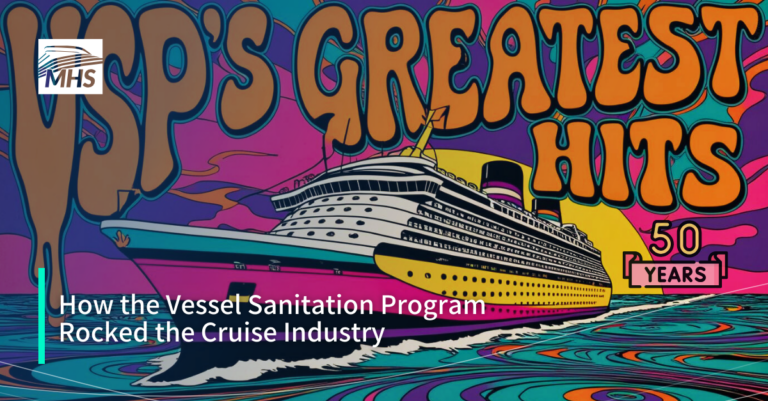While the 1970s are often romanticized—especially by those who didn’t experience them firsthand—few would dispute their place in any serious debate about the golden age of rock music. It was a decade of profound change, with political upheaval, technological breakthroughs, and cultural revolutions that redefined society. Its impact on music was equally monumental, birthing iconic bands like Led Zeppelin, Pink Floyd, and AC/DC, whose groundbreaking work set the template for future generations.
The seventies were also a turning point for maritime public health. In 1975, a wave of gastrointestinal outbreaks on cruise ships prompted the U.S. Centers for Disease Control and Prevention (CDC) to establish the origins of an environmental health initiative that would later come to be known as the Vessel Sanitation Program—or simply, the VSP.
Much like the legendary rock bands of the era, the VSP revolutionized cruise ship public health; its influence extending far beyond the coastlines of America. With the program celebrating its 50th anniversary this year, it presents an opportune moment to reflect on its achievements and examine the challenges that lie ahead.
The Rolling Stones famously sang, “You can’t always get what you want, but if you try sometimes, you just might find, you get what you need.” For the cruise industry, the question remains: Has the Vessel Sanitation Program delivered what the industry needs to keep travelers safe, or is public health still treading water?
Table of Contents
Track #1: ‘Come Sail Away’—The Birth of Cruising
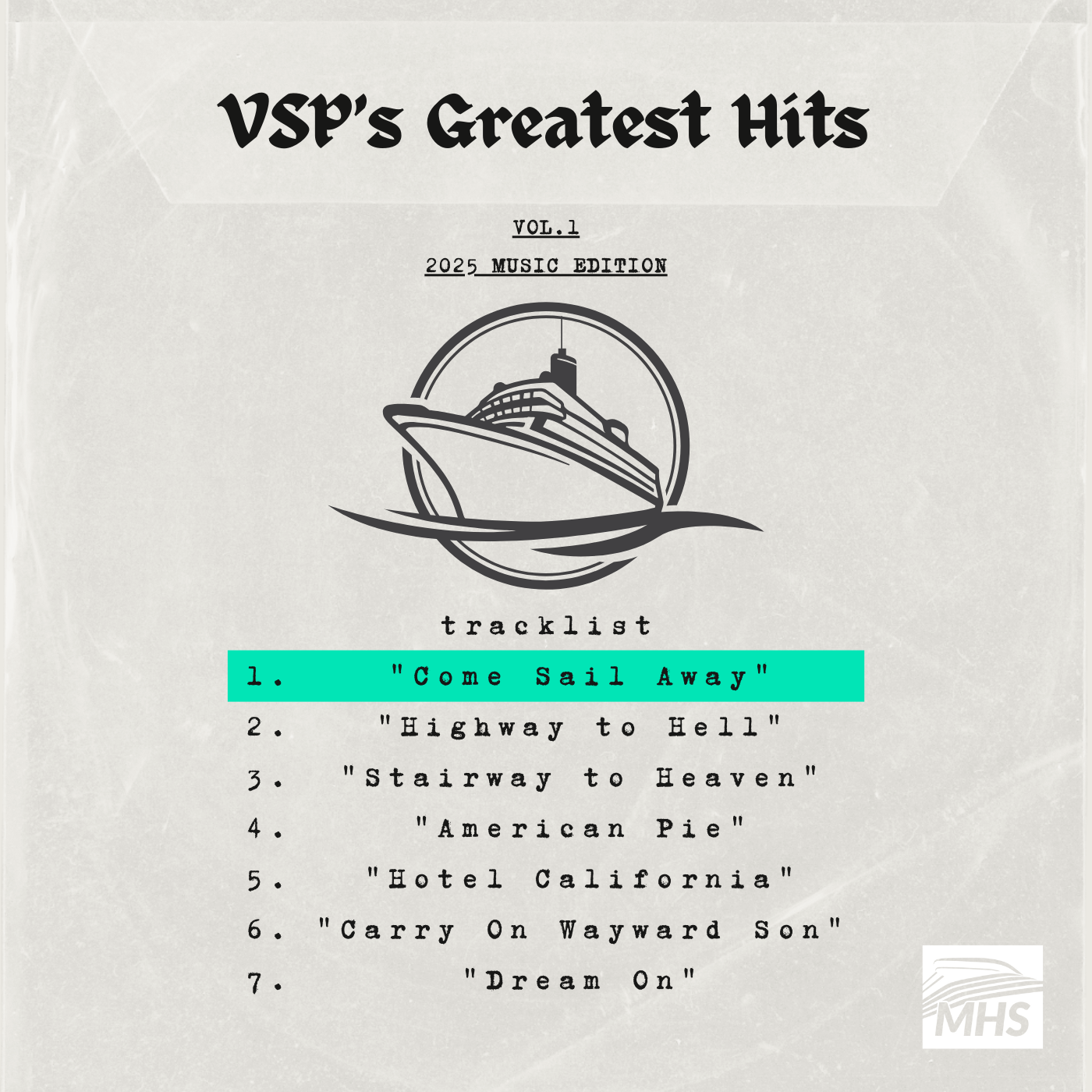
Before the 1970s, ocean liners served a singular, practical purpose: transporting passengers across the high seas. However, the rise of commercial jetliners in the early 1960s revolutionized transatlantic travel, leaving shipping companies searching for a way to remain relevant.
To survive, they needed to reimagine their identity. Much like Pink Floyd’s evolution from their early psychedelic experiments to the progressive rock masterpieces that defined their legacy, the transformation of ocean liners into cruise ships was a bold and creative reinvention.
No longer merely a mode of transportation, cruise ships became destinations in their own right. Travelers were drawn to the promise of all-you-can-eat midnight buffets, cheap drinks, and (even cheaper) entertainment in the form of quizzes, scavenger hunts, and limbo contests. Cruise ships offered an entirely new kind of experience: a blend of hospitality, leisure, and maritime traditions, rather than just a way to get from point A to point B.
Even so, the industry’s true breakthrough came in 1977 with the debut of The Love Boat. This iconic television series didn’t just entertain, it reshaped public perception. Suddenly, cruising wasn’t just for the wealthy elite—it was for everyone. The show’s cultural impact was profound, laying the foundation for the billion-dollar global enterprise we recognize today.
Track #2: ‘Highway to Hell’—A Wake-Up Call
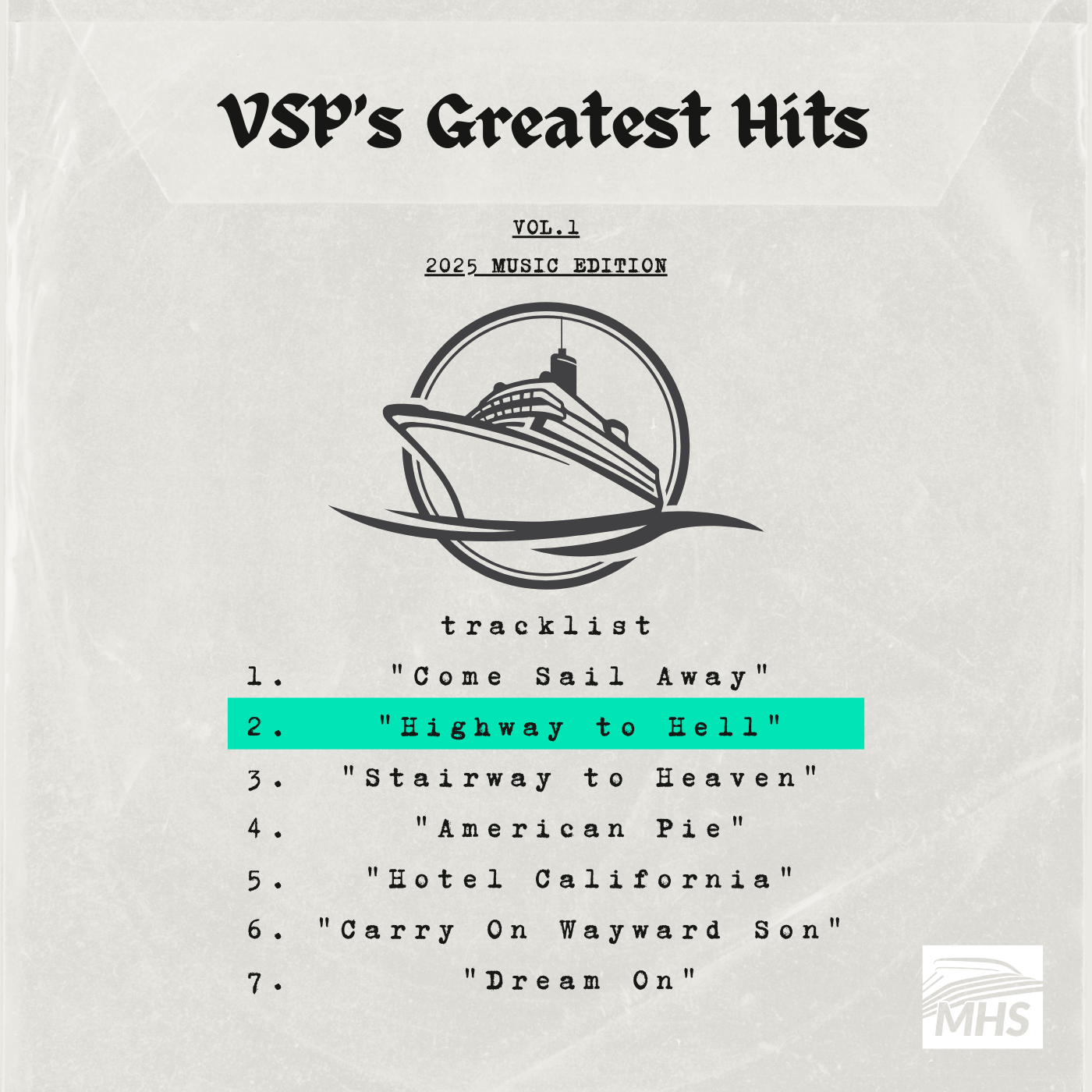
AC/DC’s hit song Highway to Hell captured the struggles of the band’s relentless touring schedule, with former lead vocalist Bon Scott reflecting, “I’ve been on the road for 13 years; planes, hotels, groupies, booze…they all scrape something from you.” This sentiment could just as easily describe the early days of the cruise industry—a period marked by ambition, turbulence, and hard lessons learned.
As self-contained, floating communities, cruise ships amplified the risks of infectious disease transmission, exposing a critical gap: the urgent need for more stringent environmental health policies in an industry that was evolving faster than its regulatory frameworks could keep pace.
The ill-fated 1978 maiden voyage of the S.S. America served as a stark illustration of these growing pains. Originally launched in 1940 as a prestigious ocean liner, the vessel had been repurposed by Venture Cruise Lines of New York as a budget-friendly cruise ship. Promising affordable luxury with fares starting at just $99, Venture aimed to capitalize on volume, banking on rock-bottom prices to fill the ship. Unfortunately, eager passengers expecting a bargain cruise were met with an experience that fell far short of the advertised luxury.
Faulty plumbing flooded cabins, toilets overflowed, and infestations of cockroaches and rats plagued the ship. Trash and soiled linens piled up in corridors, creating unsanitary and chaotic conditions. Tensions reached a breaking point when it was discovered that the vessel had been overbooked, leaving more than 100 passengers without cabins. Frustration turned to outright mutiny as guests demanded to be disembarked, forcing the Captain to return to New York before the ship even lost sight of the Statue of Liberty.
Although the America eventually set sail days later, the voyage was an unmitigated disaster. Passengers filed $2.5 million in claims against Venture Cruise Lines, and the ship received an abysmal sanitation score of six out of 100 from United States Public Health Service (USPHS) inspectors. The fallout was swift and brutal, leaving the ship and its operator irreparably damaged.
Such incidents exposed the necessity of robust sanitation protocols; not only to salvage the industry’s reputation but to safeguard the health and safety of everyone on board. The lessons of the S.S. America became a wake-up call, paving the way for the regulatory frameworks that define the industry today.
Track #3: ‘Stairway to Heaven’—The Mission That Started It All
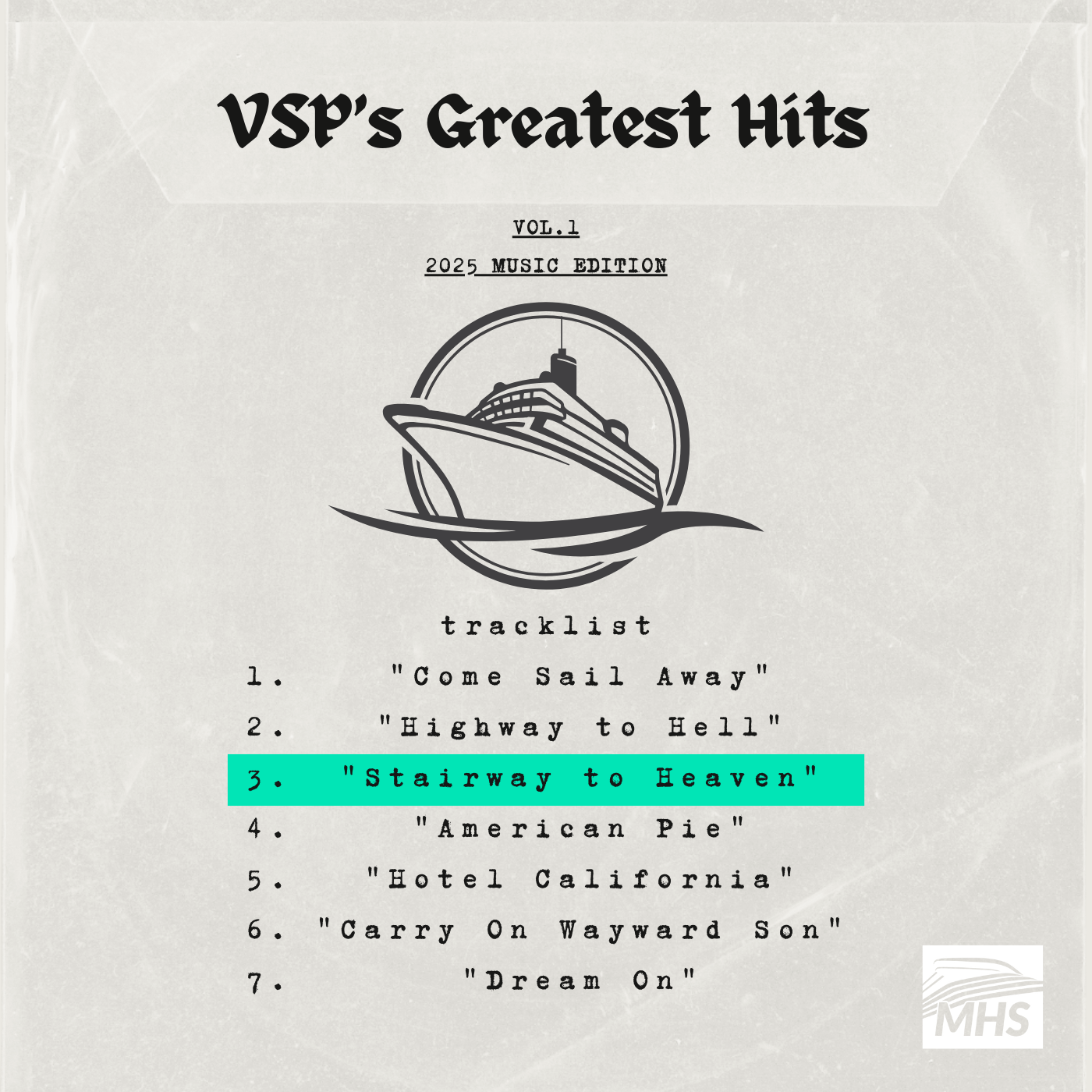
In 1975, the CDC responded to growing public health concerns by launching the Vessel Sanitation Program to reduce the risk of gastrointestinal disease outbreaks on passenger vessels. Officially framed as a “cooperative activity” between the CDC and the cruise industry, one might wonder how enthusiastically cruise executives embraced this new era of government oversight behind closed doors.
Coincidentally, that same year saw the formation of the Cruise Lines International Association (CLIA), a trade organization dedicated to championing the cruise industry. CLIA’s mission was to promote “the special benefits of cruising” and educate the general public about the industry’s safety, sustainability, and appeal.
Considering the frequency of outbreaks at the time—and the sobering reality that not a single cruise ship passed its sanitation inspection under the fledgling VSP—cynics may view the timing of CLIA’s formation as more than serendipitous. For an industry under increasing public scrutiny, establishing an organization to reassure potential passengers and bolster the industry’s image was, if nothing else, a savvy maneuver.
Regardless of how the partnership was perceived at the outset, the VSP—like Led Zeppelin’s timeless Stairway to Heaven—embarked on its own upward journey. Initially, the program focused on periodic inspections, disease surveillance, and outbreak investigations. Over the years, its scope expanded to encompass:
- Reviewing ship design plans to ensure compliance with VSP construction standards
- Training cruise ship personnel in public health practices
- Conducting collaborative research to develop evidence-based policies
- Disseminating health information to industry stakeholders, regulators, and the public
One of the VSP’s most significant achievements was the creation of a comprehensive manual; the first environmental health standards tailored specifically for cruise ships. This guiding document became a cornerstone of the program, serving as a reminder that public health initiatives, much like rock anthems, have the power to leave a lasting legacy.
Track #4: ‘American Pie’—The VSP Operations Manual
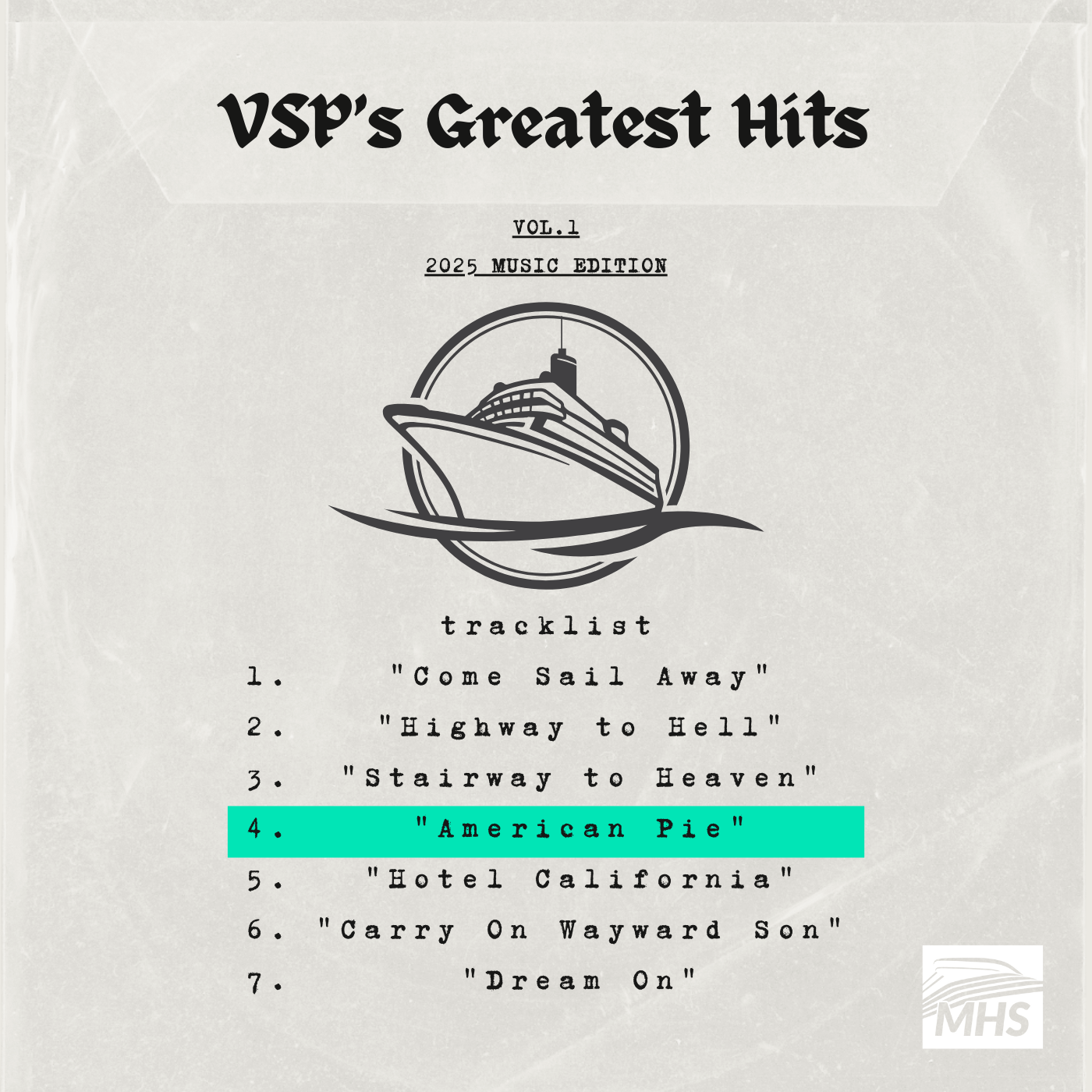
Debating the greatest rock album of all time may spark endless discussion, but when it comes to public health on cruise ships, the unparalleled impact of the VSP Operations Manual is undeniable. Together with its counterpart, the VSP Construction Guidelines, these foundational standards have shaped public health regulations for passenger vessels worldwide.
First introduced in 1989, the Operations Manual formalized best practices to safeguard health at sea. Since then, it has undergone four major revisions, with the latest edition scheduled for release this year. Each iteration reflects advancements in scientific understanding, the emergence of new pathogens, technological innovations, and feedback from industry stakeholders.
Rooted in respected global frameworks such as the FDA’s Food Code and the WHO’s Guide to Ship Sanitation, the manual covers critical areas like disease surveillance, food safety, water safety, and pest management. Its influence extends far beyond U.S. borders; health authorities worldwide have incorporated VSP standards into their own regional guidelines, often verbatim.
Although VSP requirements technically apply only to passengers vessels with a foreign itinerary calling at U.S. ports, the industry has widely embraced them as the gold standard. Just as Don McLean’s American Pie captured the zeitgeist of its era while inspiring future generations, the VSP Operations Manual remains a timeless and indispensable guide. For over three decades, it has provided a steady hand in shaping disease prevention methodologies and promoting health and safety on the high seas.
Track #5: ‘Hotel California’—Breaking AGE’s Persistent Grip
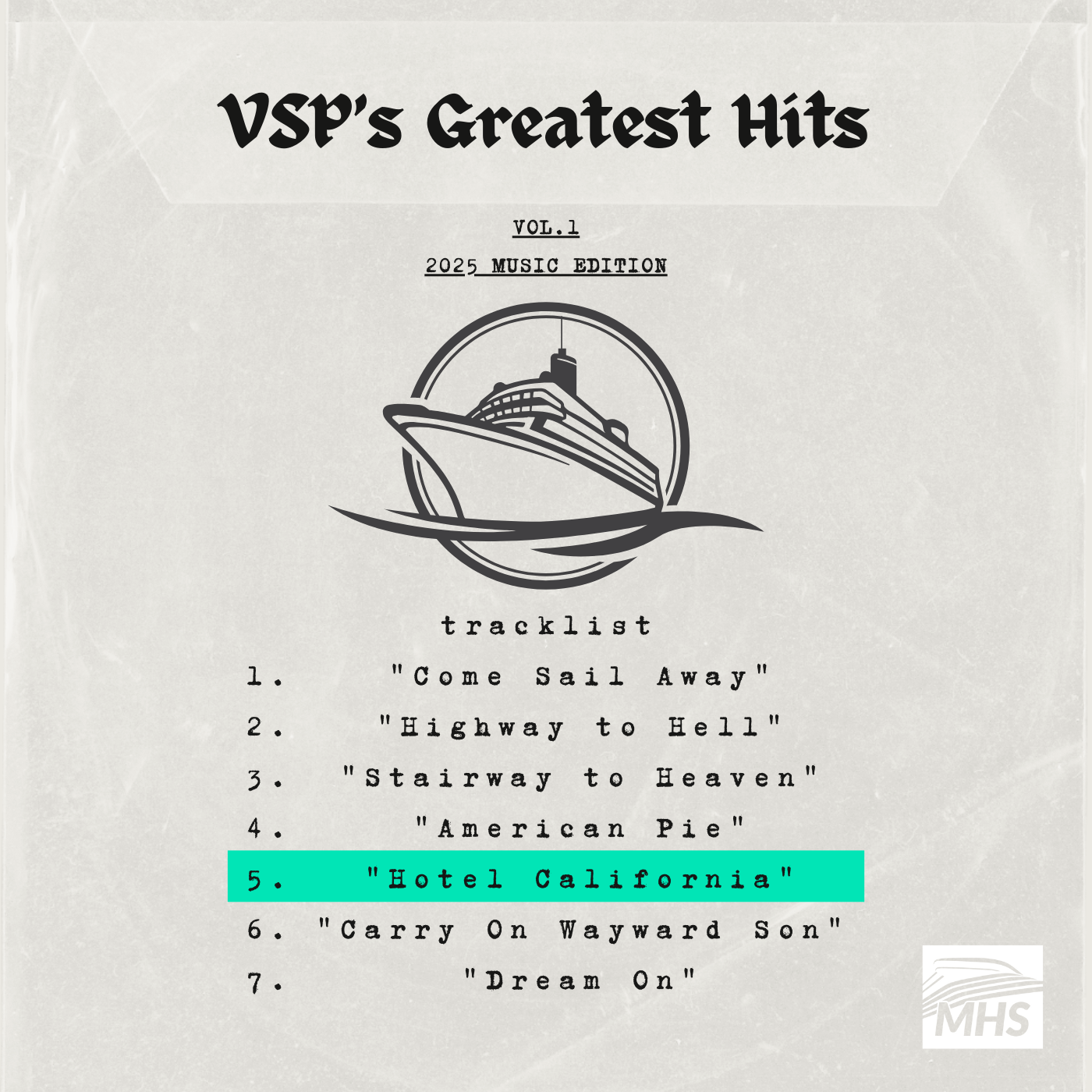
“You can check out any time you like, but you can never leave.” This haunting lyric from the Eagles’ Hotel California aptly captures the cruise industry’s enduring struggle to manage infectious diseases. The unique environment of cruise ships—high-density populations living in close quarters for extended periods—creates ideal conditions for illnesses to spread.
When the VSP launched, its mission was clear—reduce the risk of acute gastrointestinal (AGE) disease outbreaks. This naturally prompts the obvious question: Has the program succeeded in curbing the spread of gastrointestinal illnesses on passenger vessels?
The evidence suggests a resounding “yes.” The introduction of the VSP coincided with a significant decline in AGE incidence rates. During the program’s first decade, outbreak-related gastrointestinal illnesses dropped threefold. More recently, between 2006 and 2019, AGE rates decreased from 32.5 to 16.9 cases per 100,000 travel days.
While these numbers speak volumes, it’s important to consider the limitations of the data. For instance, only AGE cases on voyages meeting VSP’s outbreak thresholds are included in the statistics. Additionally, other factors may have contributed to the decline. Nevertheless, the VSP’s impact cannot be ignored.
However, even the most celebrated musicians (with rare exceptions like The Beatles) experience periods of stagnation. Similarly, while the VSP unequivocally achieved its initial goals, its ability to drive further reductions has seemingly plateaued. Over the past decade, the actual number of outbreak per year has remained relatively consistent, despite the program’s continued efforts.
This raises an intriguing question: Does the VSP have another “groundbreaking album” in its repertoire, or has it reached the limits of its influence? As the cruise industry evolves, so must the strategies for tackling infectious diseases—because much like Hotel California, some challenges prove difficult to leave behind.
Track #6: ‘Carry On Wayward Son’—Can VSP Harmonize Inspection Standards with Performance?
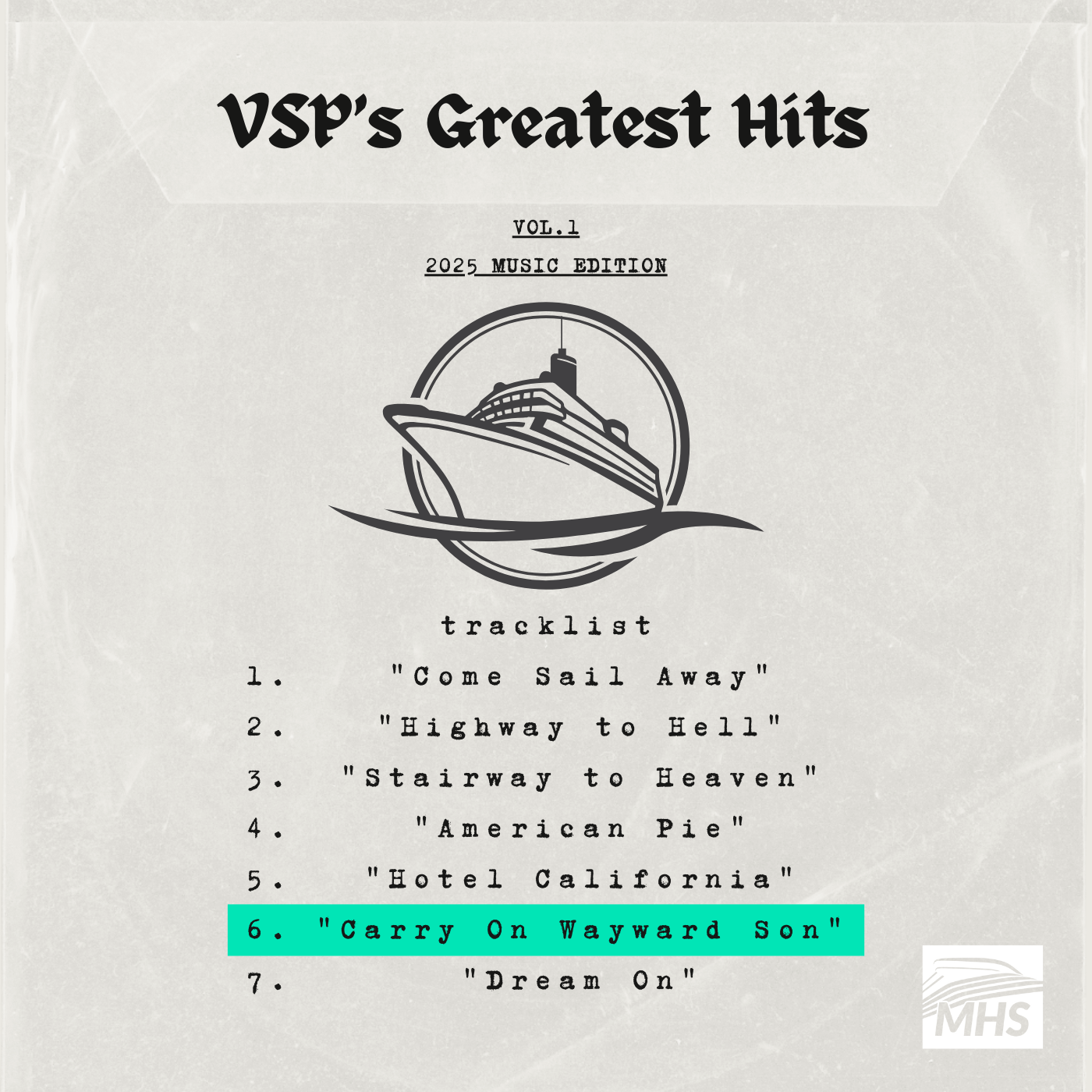
Every iconic rock band has a signature hit, and for the VSP, that “hit” is their operational sanitation inspections. These inspections have achieved legendary status within the cruise industry—and beyond. A failed inspection doesn’t just impact a ship’s reputation; it often dominates headlines, casting a shadow over the cruise line’s brand.
However, inspections alone are not a cure-all for advancing public health. Despite their rigor, there’s little evidence that they reliably predict or prevent future outbreaks. This isn’t unique to the VSP; similar critiques have been made about health and safety audits in other sectors, such as those regulating the food and beverage industry.
Surprisingly, the VSP’s core inspection framework has remained largely unchanged since its inception. Cruise ships are still subject to two inspections annually, graded on a 100-point scale where scores below 86 are deemed “not satisfactory”. Consequently, cruise lines have become increasingly sophisticated at navigating them—or, more precisely, at preparing for them.
This focus on preparation often prioritizes optics over outcomes, reducing public health to a performance metric. Instead of driving lasting operational improvements, the essence of public health—protecting lives—has been eclipsed by the pursuit of high inspection scores.
And yet, the industry has made undeniable progress. Failing a VSP inspection is rare today, and the cruise sector has come a long way from the sanitation challenges of the S.S. America era. Nonetheless, if disease prevention is to advance further, the system itself must evolve. Inspections can raise the bar for environmental health, but their true potential lies in fostering a deeper, more sustainable commitment to public health.
This requires going beyond merely addressing violations. Cruise lines must understand the underlying risks and implement sustainable measures that endure long after inspectors disembark. It means shifting the focus from compliance to culture—making public health a shared, daily responsibility rather than a periodic performance review.
Achieving this systemic change may exceed the VSP’s current resources (and perhaps its scope), but it’s a challenge worth embracing. By working together to integrate proactive disease prevention strategies into routine operations, the VSP and the cruise industry can move closer to a future where inspections are not just a test of standards but a catalyst for continuous improvement. In doing so, they might compose a new signature hit—one that harmonizes compliance with a lasting public health impact.
Track #7: ‘Dream On’—Charting the Course for the Next 50 Years
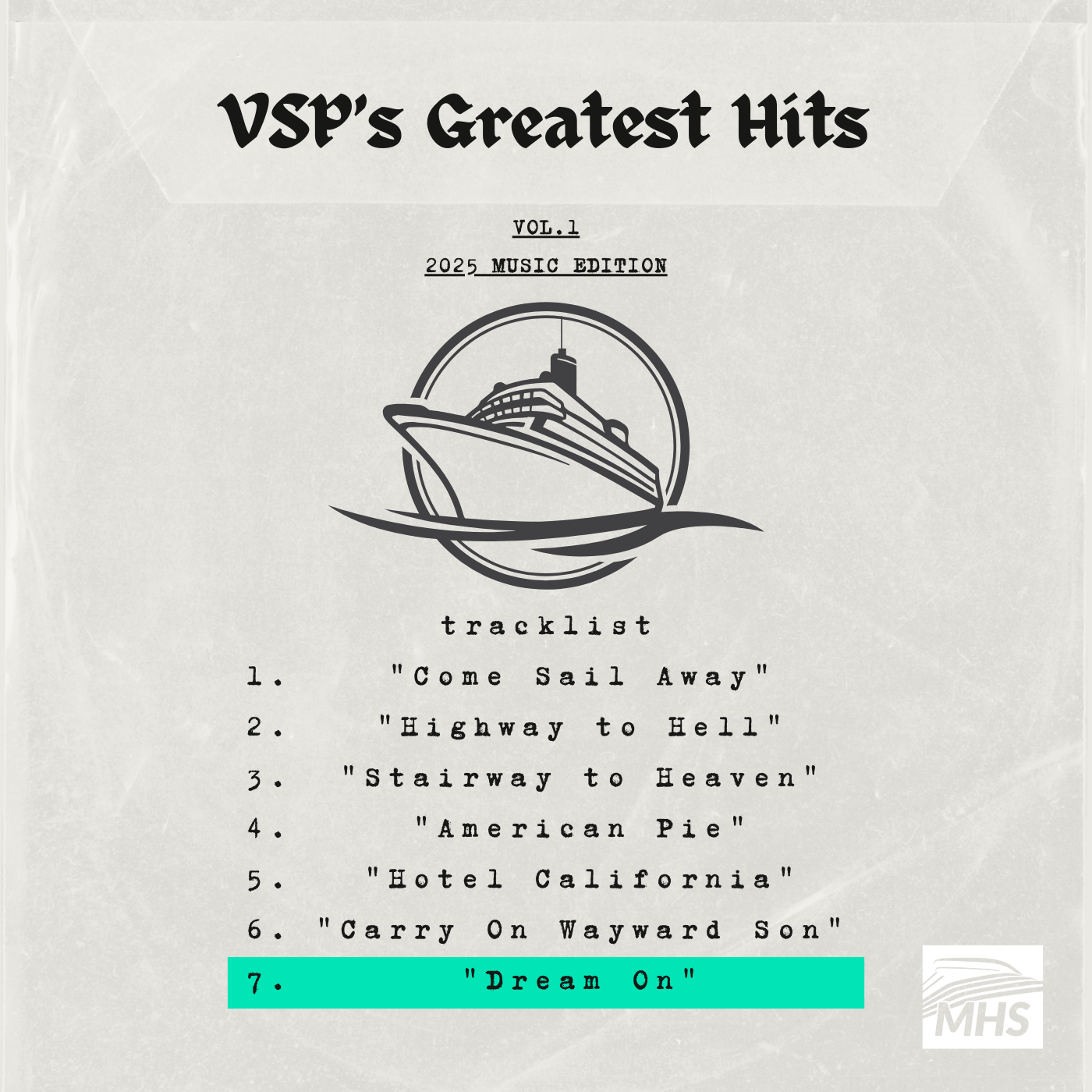
As Aerosmith’s timeless anthem reminds us, dreaming big is the first step toward achieving greatness. For the Vessel Sanitation Program, the past 50 years have been nothing short of transformative. Like the greatest rock bands, the VSP began humbly, faced challenges head-on, adapted to changing landscapes, and ultimately revolutionized its industry.
Today, the VSP is recognized as the benchmark for excellence in cruise ship sanitation. Its transparency is unmatched, setting it apart not just from its counterparts in other countries, but from many public health initiatives globally. The program doesn’t merely publish inspection scores—it shares full reports, corrective action statements, and outbreak investigations. In an industry often criticized for opacity, this commitment to openness strengthens trust and accountability.
The VSP 2024 annual meeting marked another pivotal moment: the announcement of an expanded mission. No longer focused solely on acute gastroenteritis, the program now aims to “prevent and control the introduction and spread of environmentally associated illnesses and hazards on cruise ships.” This welcome evolution reflects a broader understanding of the complexities of modern-day maritime public health and the program’s activities more accurately, signaling a renewed commitment to passenger and crew safety.
The cruise industry that the VSP serves today is a far cry from the one it encountered in 1975. Ships are larger, passenger demographics are more diverse, and public health threats have grown more intricate. To keep pace, the VSP must continue to innovate without losing sight of its core mission—safeguarding public health at sea.
This future will demand bold strategies: embracing cutting-edge technology, fostering deeper partnerships, and reimagining systems to not only meet but surpass the challenges of a dynamic industry. It’s about creating a legacy where public health is not just a regulatory obligation but a shared value ingrained in every vessel’s culture.
As the VSP and the cruise industry navigate the next 50 years, their journey mirrors the enduring spirit of 70s rock: bold, inventive, and always striving for something greater. Because, as Aerosmith sang, “You’ve got to lose to know how to win.” The lessons of the past half-century have set the stage for a future that is brighter, safer, and healthier—for passengers, crew, and the industry as a whole.

